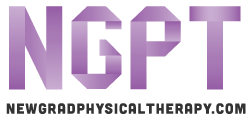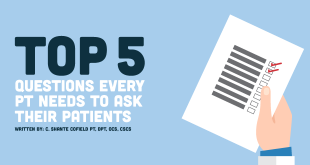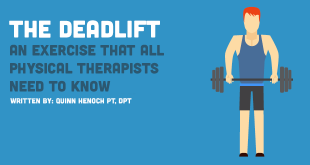In the first installment of my series on research, I listed several reasons why new grads and experienced physical therapists need to stay on top of research. Hopefully you’re convinced. In this installment, I’ll give you some tips that will help keep you informed in as little time as possible.
Ultimately, the only way to be 100% current on all the latest research is to read every article related to PT, every single day. No one has time for this. It’s impossible to read everything, and there are many great articles that you will not be able to read. That’s why I recommend just an article a day. As Erik Meira, the founder and host of PT Inquest, noted last year,
“Let’s look at what was published on the ACL last year (2013). Oh. Only 1252 articles ON ONE FREAKING LIGAMENT OF ONE FREAKING JOINT!!!”(i)
Don’t let the fear of missing out deter you from enjoying research. An article a day is a great start, and if you read articles from the leading journals of our industry, you will have a good idea about what the latest research says about our field.
The Plan
Choose a particular time each month and set aside 2 hours of your time. It doesn’t matter what time it is, but it needs to be consistent. If you don’t set a consistent time, you will never read research. It’s too easy to say, “I’ll do it when I have time.” For me, I choose the first weekend of every month. Put away the phone and eliminate time wasters. Research requires all of your attention. Choose 5 journals that are most pertinent to PT. Here are the 5 I recommend:
- Physical Therapy (official journal of APTA and free with your membership)
- Clinical Rehabilitation
- Journal of Sports and Orthopedic Physical Therapy (free if you’re a member of the orthopedic section of APTA)
- American Journal of Sports Medicine
- British Journal of Sports Medicine
You can choose whichever journals you want, but I think the five above should be a great start. Here are some others you might want to consider:
- Spine
- Journal of Manual and Manipulative Therapy (included with membership to American Association of Manual Physical Therapists)
- International Journal of Physical Therapy
- Movement Disorders
- Journal of Medicine and Sports Science
- Pain
- Arthroscopy (primarily for surgeons but includes a few articles that pertain to PT and post-op rehab)
- Sports Health (included in your membership to the sports section of the APTA)
- Archives of Physical Medicine and Rehab
- Journal of Strength and Conditioning Research
- Journal of Physical Therapy Science
Physical Therapy in Sport Experiment
There are a variety of journals, but once you find the journals that give you the best return on investment, double down. In other words, focus most of your attention on those journals. I’ve experimented with over 20 journals, and I’ve found that the 5 above give me the best return on investment. The other journals have more of a medical background but you can still find some gems there. Again, it’s your choice. The next step is to read the abstracts of most of the articles. Read the abstracts that are the most pertinent and most relevant. You don’t need to read all of them. As you find the abstracts that interest you, write the reference info, so you can easily find it later. Reading the abstracts of the 5 major journals should take 1-2 hours. Another option is to a perform focused review of the research. Let’s say you’re seeing a lot of patients with lumbar spine stenosis. You can search the databases for recent articles that only pertain to this diagnosis.
Finding the Articles
The question now is, where do you find the articles? This is tricky, even in the information age, because most journals charge fees for their articles. You have several options:
1) Become a member of APTA, or a section of the APTA.
Of course, you should be already, but another benefit of the APTA is that you have access to some online databases, including:
- PEDRO: free for anyone
- PTNow: free with APTA membership
- This includes access to Cochrane Databases
- CINAHL (Cumulative Index to Nursing and Allied Health Literature)
- SportDISCUS
- Hooked on Evidence (free with APTA membership)
This is how Eric Chaconas, assistant director of physical therapy at the University of Saint Augustine, FL, and also a fellow of association of orthopedic manual physical therapists (FAAOMPT), stays on top of research: “I get JOSPT, Sports health, JMMT and Physical Therapy. They all come to my house due to memberships I pay for APTA Orthopedics Section, Sports section and AAOMPT,” says Chaconas. “These are the main journals that affect my specialty area the most, so I try to read through them monthly. [Get] at least 1 journal coming to your house monthly and read it briefly. It’s amazing how it doesn’t really take that much time.”
2) Another option is to ask your school if they can give you access to the databases.
I can find almost any article I want through my school’s databases (University of Saint Augustine). It doesn’t hurt to ask. If the databases don’t have the article and I really want to read it, I can send an e-mail to the librarian at my school and he will send it to me.
3) Ask the author himself!
To be honest, I’ve never done this before, since I can find almost any article through my school or through the APTA, but I don’t see why it wouldn’t work. If you spent a lot of time and money to do a research trial, wouldn’t you want to disseminate your research to as many people as possible? Nobody does research to get rich. Meira supports this, saying, “When all else fails, [send the authors] an email and ask them nicely for a copy of their article, expressing your strong interest in learning more. They are usually excited to share.”
Even if you aren’t an APTA member, reading the abstracts will catapult you ahead of most physical therapists. At least you will know what is going on, what researchers are doing, and who the researchers are.
Reading the Article
Let’s assume that you have access to at least 1 or 2 databases and that you can download the articles. The next step is to actually read the article. This isn’t as tedious or boring as it sounds.
When you finish the article, make sure you add it to the bibliography as a reference. If you read an article a day for several years, you’re going to have your own personal bibliography. If you’re trying to recall an article, you will be able to find it.
Conclusion
I called this article “The 4-Hour Researcher” because it’s catchy (like the international bestseller book The Four-Hour Workweek by Tim Ferriss) and it’s a plan to keep you informed in as little time as possible. Remember, reading all the new research would be a full-time job. Because you already have a full-time job and other commitments, you will not read all of the best research. Time is scarce and life is short. Don’t worry about that. Be consistent and read an article a day.
 NewGradPhysicalTherapy.com The Largest Online Resource For New Grad Physical Therapists
NewGradPhysicalTherapy.com The Largest Online Resource For New Grad Physical Therapists






